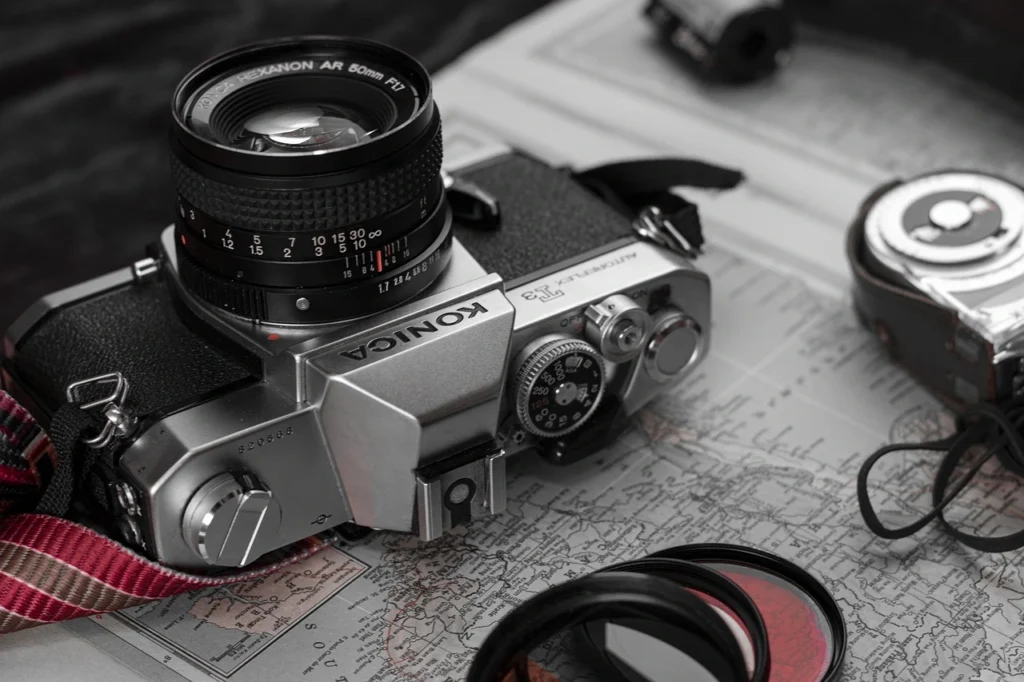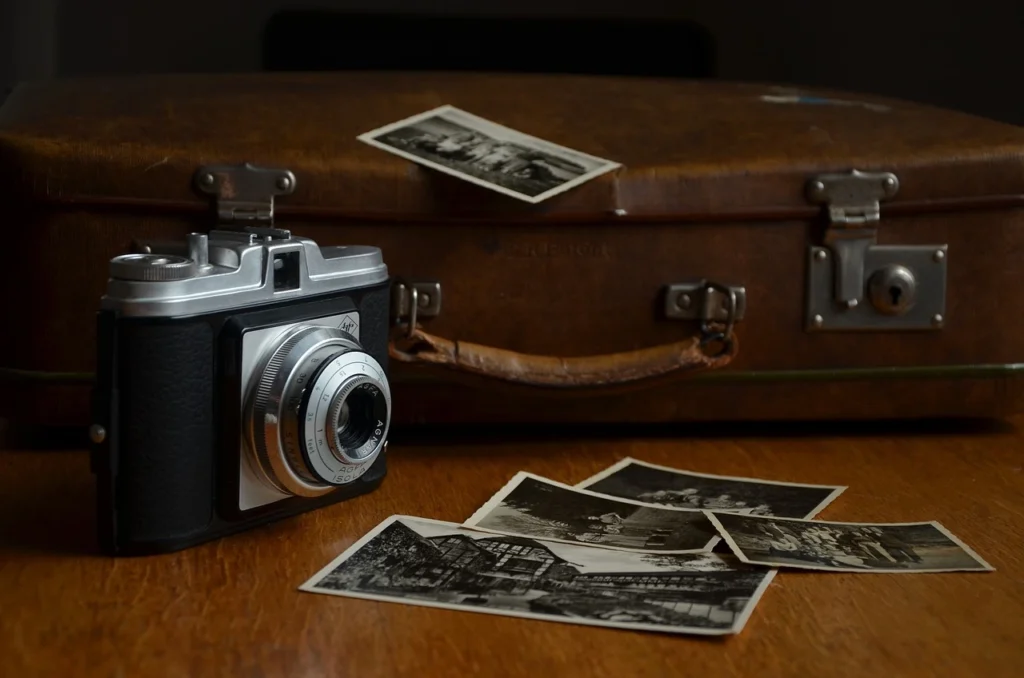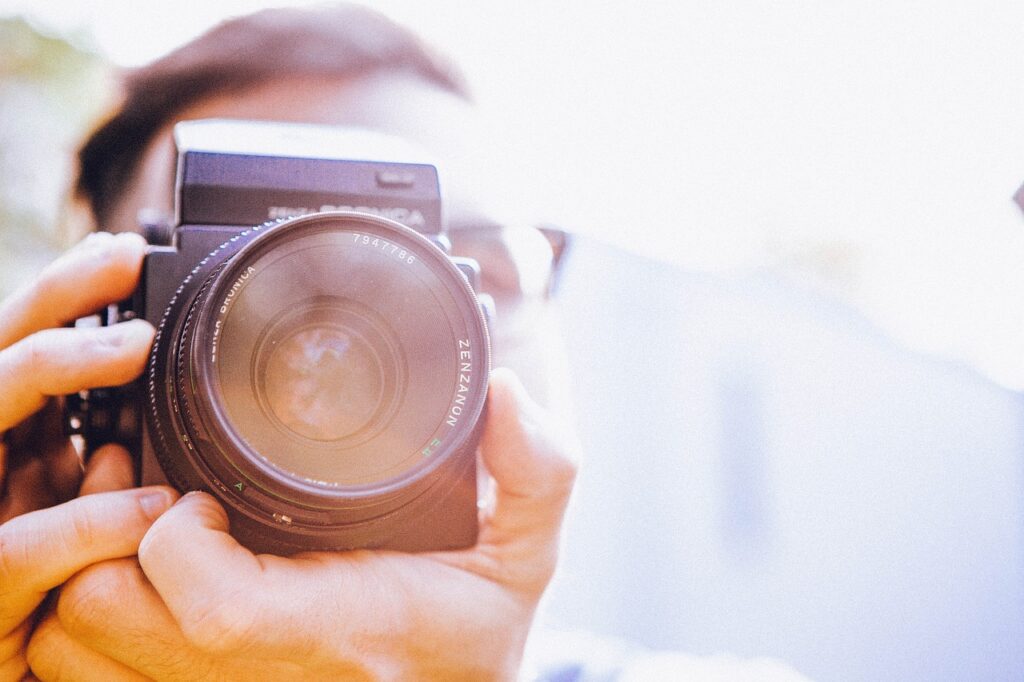Donec efficitur, ligula ut lacinia
viverra, lorem lacus.
Emphasis in Photography: Techniques, Tips, and Examples
What is Emphasis in Photography?
Emphasis Photography Definition
In photography, emphasis is the technique of directing the viewer’s eye to a main subject. It draws the viewer’s attention to a particular element within the frame. It is an accent defining the picture’s focal point.
Emphasis in Photography: Definition of the Main Principle
The principle of emphasis in photography revolves around guiding the viewer’s eye to the picture’s element you want to accentuate. Photographers utilize lighting, focus, composition, and color contrast to ensure their subject is the only thing in focus of the viewer’s attention. Emphasizing your subject provides more visual weight to the photo. You tell the intended story and convey the message more effectively.
Emphasis: Meaning in Photography
Attracting attention to your subject is only the tip of the iceberg. There are several ways to create a hierarchy of visual elements to guide the gaze. You can use them to manipulate your work’s mood, narrative, and overall impact. It helps you ensure the essence of the photograph is communicated effectively. Knowing how to bring emphasis to the most significant parts of your shot can win you a place in the visual arts realm.

Why is Emphasis Photography Important?
Enhancing Visual Storytelling
If you learn to highlight your subject, you can tell emotionally evocative stories in different genres, from stylish street photography to serene landscapes. There are several ways to properly highlight your narrative’s key elements. These techniques are actively used in portrait and event photography. This approach helps you tell a story with a strong emotional response.
Improving Composition
Compositional knowledge is crucial for every photographer, and accentuation plays a very important role in it. The goal is to lead the focus to your subject while maintaining overall balance and harmony. A thoughtfully incorporated accentuation ensures your pictures always look aesthetically appealing and transmit your main message.
Creating Impactful Photos
Accentuation helps create a lasting impact. Guiding your audience’s eye towards something, you can make your image more striking and memorable. By prioritizing certain elements within the frame, photographers elevate an ordinary scene into something outstanding. The visual will resonate with the public, staying in people’s minds for a long time.

Techniques to Achieve Emphasis in Photography
Using Light and Shadows for Emphasis Photos
Light is one of the most powerful tools for helping your subject stand out. For example, in portrait photography, using direct artificial light or a beam of sunlight through a window can help emphasize the model’s facial features. Shadows can obscure less important details and minor drawbacks, making brightly highlighted traits even more prominent.
Creating Emphasis Through Focus Photography: Manipulating Depth of Field
Adjust your camera’s aperture. It will let you control the area of the image that remains in sharp focus. This method is known as selective focus. It prioritizes particular elements within the frame, helping the human eye find a vantage point.
In portrait photography, prioritize a shallow depth of field to accentuate the subject. It will blur the background using a dreamy bokeh effect. The foreground is sharp and clear, so the model’s face remains a vantage point. On the other hand, a higher depth of field can be particularly effective in landscape photography to preserve the vast details across the scene.
Shutter speed can be manipulated to represent motion or freeze action. A fast shutter speed can capture crisp, clear details in a fast-moving subject against a static background. Meanwhile, a slow shutter speed can create motion blur around the subject.
Using Contrast and Color for an Emphasis Photo
Basic color theory is essential to showcase your subject in color effectively. Observe different color schemes. Learn to utilize complementary (contrasting) colors or triadic colors (three colors situated close to each other on the color wheel) in your shots. This knowledge will help you understand which tones and shades highlight the key elements best.
Beyond color, contrast in brightness, texture, or even emotion can be used to highlight the subject. For instance, a black-and-white photograph might use the contrast between light and dark tones, while a color photograph might use a pop of a bright shade like red or orange against a plain, neutral backdrop.
Emphasis Through Positioning Photography: Frame Your Subject Right
Where you position the main element can significantly affect how the audience perceives it. For example, placing the most important elements in the center of the frame often creates a sense of stability and directness. However, the off-center positioning creates interest and dynamism. Additionally, framing the subject with natural elements—such as a doorway, window, or tree branches—can further accentuate it. Crop your image for a balanced and compelling composition.
Applying the Rule of Thirds for Photos with Emphasis
The rule of thirds is one of the most important compositional guidelines. Divide the frame into a grid consisting of nine sections. Place the key element along one of these lines to create a visual interest. Placing the main parts of the frame at the lines’ intersections is more effective if you want to avoid a static feeling and make your picture more engaging and emotionally evocative.
Leading Lines and Shapes in Photography with Emphasis
When used effectively, straight or curved leading lines create a visual journey for the viewer. Use roads, rivers, pathways, or architectural features like doorways or staircases to drive the public into the scene. The leading lines can be vertical, horizontal, or diagonal.
Additionally, shapes can be used for effective accentuation. Circular shapes, for example, naturally draw the eye inward. Triangles can lead the viewer’s gaze upward or downward, depending on their orientation.
Utilizing the Negative Space
Manipulating the empty or open areas around your subject can help you create a strong accent, especially in minimalist and monochromatic shots. Simplicity is the key. For instance, a single light object against a solid black background grabs the audience’s attention without ruining the general intricacy and delicacy.
Textures and Patterns
A textured background, such as rough stone or intricate foliage, can add layers of meaning and interest. Establish patterns and break them around your main subject to guide people’s eye to it. You can use both natural and human-made patterns. For instance, a woman in a bright red dress immediately becomes the center of attention in a group photo where other people wear similar outfits in muted colors.
Scale and Perspective for Emphasis in Pictures
Scale and perspective are powerful tools for accentuation in landscape and architectural photography. By making a certain element appear smaller or bigger, photographers define its role and significance for the overall composition. Photographing a person against a vast landscape can create a sense of solitude or insignificance. A telephoto lens will be particularly effective in this case. On the other hand, a macro shot with a zoom on intricate details highlights their importance.
Similarly, changing the perspective from which the photograph is taken can alter the viewer’s perception. Low angles transmit the idea of power and improvement. Meanwhile, high angles represent fragility and vulnerability.

Emphasis Photography Examples
Iconic Emphasis Picture Examples and What Makes Them Stand Out
Steve McCurry used a combination of selective focus and complementary colors in his iconic portrait “Afghan Girl” (1984). Afghan refugee Sharbat Gula wears a bright red scarf. This scarf vividly contrasts the muted green backdrop. The shallow depth of field isolates her face. These techniques make Gula’s bright green eyes the photo’s focal point.
Dorothea Lange’s “Migrant Mother” (1936) showcases the resilience of women during the Great Depression. Which type of emphasis did the photographer use in this image? Florence Owens Thompson sits in the central position. Her children frame her on both sides. This positioning guides the gaze to the woman’s face. The blurred background prevents distraction from Thompson’s facial expression.
In his famous image “Moonrise, Hernandez, New Mexico” (1941), Ansel Adams used a large-format camera and a telephoto lens. The moon hangs low in the sky. This angle makes the moon the central point of the image. Colors were not required to highlight the contrast between bright moonlight and the obscured landscape below. The vastness of the scene is captured through the careful use of scale.
In Henri Cartier-Bresson’s “Behind the Gare Saint-Lazare” (1932), timing and framing defined the success. Cartier-Bresson combined leading lines and a decisive moment to freeze the action with a dynamic and harmonious composition.
Analyzing Emphasis in Photos: What Works and Why
In a photograph where the subject is highlighted through color contrast, it is important to consider how the color scheme contributes to the overall mood. Bright colors against muted backdrops convey urgency and intensity.
A shallow depth of field is effective for portraits since it blurs the background. The subject remains in sharp focus. The isolation from the background makes it the clear focal point of the image. This technique is particularly effective in portraits to emphasize the model’s facial expressions and create an emotional connection.

Practical Tips
How to Train Your Eye to Recognize Opportunities
Observe the scenes around you with an emphasis on photography. Pay attention to how light interacts with different objects, notice where shadows fall, and consider how these elements could be used. Look for natural frames and practice noticing color, texture, and scale contrasts. Observe the works of photographers you admire and identify the techniques they use. Seek similar creative opportunities in your own photography.
Experimenting with Different Techniques
Learn to work with light and shadow. Change your light source’s direction and intensity to see how it affects the subject’s appearance. Try shooting the same subject in various lighting conditions and compare the impact of different qualities of light on the final result.
Master your camera settings. Pay special attention to aperture and depth of field. Experiment with both shallow and deep depth of field to see how focusing on different parts of the image can alter the accentuation. Note that shallow depth of field works for portraits, while deep depth of field is actively used for capturing landscapes.
Using Post-Processing
Utilize selective sharpening to accentuate the subject. The background should remain slightly softer. This photo editing technique is particularly effective in portrait photography. It lets you keep the subject’s eyes and facial features in sharp focus to create a sense of depth.
Increase the saturation of the subject’s colors. The background can be kept untouched or slightly desaturated. Use selective color adjustments to make the key elements pop out. Additionally, playing with contrast and exposure levels can help you define the most important elements of your image. Maintain a natural look and ensure the general appearance is not altered dramatically.
Conclusion
By mastering light, focus, composition, and post-processing, photographers can direct the attention to the most important elements within a frame. Experiment with different techniques. Study the work of accomplished photographers. Develop your own style. Embrace your creative vision. Find what suits you best. Techniques and recommendations discussed in this comprehensive guide can help you push the creative boundaries.
FAQs
What Is the Definition of Emphasis in Photography? How Does It Enhance Images?
Emphasis photography meaning includes a set of techniques to draw attention to the most important elements of an image, making them the focal point. This technique enhances images by creating a clear visual hierarchy, making the photograph more engaging.
What Techniques Can I Use to Create Emphasis in a Photo?
Selective focus makes the main subject look sharper on a soft background. Lighting can underline the subject’s best features. Color contrast can make the subject pop against its surroundings. Composition techniques can direct the viewer’s gaze.
How Does Lighting Affect Emphasis in a Picture?
Proper lighting can highlight the subject, making it stand out against the background. Shadows can be utilized to create depth. They also direct attention to specific areas of the image. Insignificant elements and minor flaws can be obscured and hidden from the public. For example, side lighting can add dimension to a subject. The backlighting highlights the subject’s shape with a silhouette effect.
What Role Does Photography Composition Play in a Photo with Emphasis?
Compositional techniques arrange the elements within the frame. They aim to lead the viewer’s gaze to the crucial parts of the image.
Can I Emphasize Pictures without Using Contrast?
Yes. Selective focus, composition, and lighting provide the necessary accentuation even when applying contrasts is not possible.